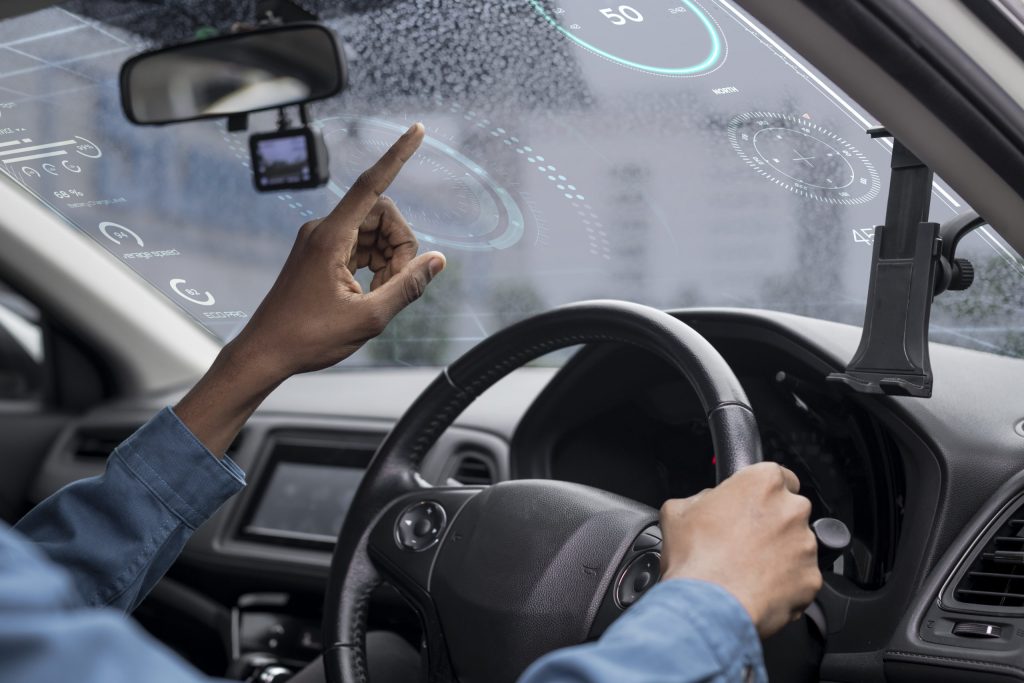Leveraging Google Ads For Car Dealership Marketing
Effective marketing is crucial for car dealerships to attract customers and increase sales. In today’s digital age, online advertising platforms offer immense potential for reaching target audiences. Among these platforms, Google Ads stands out as a powerful tool for car dealership marketing. This blog aims to provide insights and strategies for utilising Google Ads effectively in car dealership marketing campaigns.
Understanding Google Ads and Its Benefits for Car Dealerships
Google Ads is an online advertising platform that allows businesses to create and display ads on Google’s search engine results pages and partner websites. Its features and benefits make it an ideal platform for car dealerships:
Wide reach and visibility: Google is the most popular search engine globally, with billions of searches conducted daily. By leveraging Google Ads, car dealerships can expose their inventory to a vast audience actively searching for cars and related information.
Targeted advertising based on location, demographics, and interests: Google Ads offers precise targeting options, allowing car dealerships to reach potential customers based on their location, demographics, and interests. This targeted approach ensures that the ads are shown to the most relevant audience, maximising the chances of conversion.
- Cost-effective options for various budgets: Google Ads accommodates businesses of all sizes and budgets. Whether it’s a small independent dealership or a large franchise, Google Ads provides flexible bidding options and budget controls to ensure cost-effectiveness.
- Measurable results and analytics for tracking campaign performance: Google Ads provides comprehensive reporting and analytics tools, enabling car dealerships to track key performance indicators (KPIs) such as click-through rates (CTR), conversion rates, and cost per acquisition (CPA). This data-driven approach allows businesses to make informed decisions and optimise their campaigns for better results.
Setting Up a Successful Google Ads Campaign
To run a successful Google Ads campaign, car dealerships need to follow a systematic approach:
- Identifying campaign objectives and goals: Clearly define the objectives of the campaign, whether it’s generating leads, increasing website traffic, or boosting sales. This will help in crafting effective ad messaging and measuring success.
- Conducting market research and audience analysis: Understand the target market, including their preferences, needs, and buying behaviour. This information will inform keyword selection, ad targeting, and messaging.
- Selecting relevant keywords and ad targeting options: Research and identify keywords that potential customers are likely to search when looking for cars. Utilise Google Ads’ keyword planner tool to discover relevant keywords and plan ad campaigns accordingly. Additionally, leverage ad targeting options such as location, language, and device targeting to refine the audience reach.
- Creating compelling ad copy and landing pages: Craft engaging and persuasive ad copy that highlights the unique selling points of the dealership’s inventory. Develop relevant and user-friendly landing pages that align with the ad messaging to ensure a seamless user experience.
- Optimising campaigns for mobile devices: With the increasing use of mobile devices for online searches, it is essential to optimise campaigns for mobile users. Ensure that ads and landing pages are mobile-friendly and provide a seamless browsing experience.
- Implementing tracking and conversion codes for effective measurement: Install tracking codes such as Google Analytics and conversion tracking to measure the effectiveness of campaigns. These codes enable the tracking of website interactions, conversions, and other valuable metrics.
Targeting the Right Audience with Google Ads
Defining the ideal customer profile for car dealership marketing is crucial to maximise the effectiveness of Google Ads campaigns. Consider the following strategies:
- Geographic targeting: Specify the geographic area where the dealership operates or wishes to target. This ensures that ads are shown to users in relevant locations, minimising wasted impressions.
- Demographic targeting: Identify the demographic characteristics of the target audience, such as age, gender, and income level. Utilise Google Ads’ demographic targeting options to refine the ad reach.
- Interest-based targeting: Leverage Google’s vast user data to target individuals with specific interests related to automobiles, such as car enthusiasts, luxury vehicle buyers, or eco-friendly car shoppers.
- Remarketing and customer match options: Retarget users who have previously visited the dealership’s website or engaged with their ads. Additionally, use customer match options to target individuals with similar characteristics to existing customers.
- Tailoring ad messaging to resonate with the target audience: Customise ad copy and creatives to speak directly to the target audience’s needs and preferences. Highlight features, benefits, and promotions that are likely to attract their attention.

Maximising Budget Efficiency in Google Ads Campaigns
Setting a realistic budget is the foundation for running cost-effective Google Ads campaigns. Consider the following strategies:
- Setting realistic budget goals: Determine the maximum amount you are willing to spend on advertising and allocate budgets accordingly. Ensure the budget aligns with the campaign objectives and the desired return on investment (ROI).
- Exploring different bidding strategies: Google Ads offers various bidding options, including cost-per-click (CPC), cost-per-thousand impressions (CPM), and cost-per-acquisition (CPA). Experiment with different bidding strategies to find the most effective approach for your goals and budget.
- Implementing ad scheduling to target high-conversion times: Analyse campaign data to identify peak periods when conversions are more likely to occur. Schedule ads to appear during these times to maximise their impact.
- Utilising ad extensions to enhance ad visibility and relevance: Ad extensions provide additional information and options within the ad, increasing visibility and engagement. Use extensions such as call extensions, location extensions, and sitelink extensions to provide relevant information and encourage user interaction.
- Monitoring campaign performance and adjusting bids as necessary: Regularly monitor campaign performance metrics, such as CTR, conversion rates, and cost per conversion. Adjust bids and budgets based on the performance data to optimise campaigns.
- Experimenting with A/B testing to optimise ad performance: Conduct A/B testing to compare different variations of ads, landing pages, and targeting options. This iterative process helps identify the most effective elements and refine campaigns for better results.
Optimising Landing Pages for Conversion
Well-optimised landing pages play a crucial role in converting ad clicks into meaningful actions. Consider the following strategies:
- Designing landing pages that align with ad messaging: Ensure consistency between the ad copy and the landing page content, including headlines, visuals, and offers. This provides a seamless experience for users, increasing the likelihood of conversion.
- Ensuring landing page speed and mobile responsiveness: Optimise landing pages to load quickly and provide a smooth browsing experience across devices. Slow-loading or non-responsive pages can deter users and lead to higher bounce rates.
- Incorporating clear call-to-actions (CTAs) for lead generation: Use compelling and visually prominent CTAs that guide users to take the desired actions, such as scheduling a test drive, requesting a quote, or contacting the dealership.
- Implementing lead capture forms or click-to-call functionality: Provide convenient options for users to submit their contact information or directly call the dealership for inquiries. Simplify the lead generation process to maximise conversions.
- Conducting A/B testing to improve landing page performance: Test different variations of landing page elements, such as headlines, images, form layouts, and CTAs. Analyse the data to identify the highest performing elements and continuously optimise landing pages for better conversion rates.
Measuring Success and Monitoring Campaign Performance
To gauge the effectiveness of Google Ads campaigns, track and analyse key performance indicators. Consider the following steps:
- Understanding key performance indicators (KPIs) for car dealership marketing: Identify the KPIs that align with campaign objectives, such as impressions, clicks, CTR, conversion rates, and CPA. These metrics provide insights into the campaign’s performance and overall marketing success.
- Utilising Google Ads reporting tools and analytics: Explore the reporting and analytics features within the Google Ads platform. Monitor campaign data, generate reports, and gain valuable insights into ad performance, audience behaviour, and conversion patterns.
- Analysing campaign metrics such as click-through rates (CTR), conversion rates, and cost per acquisition (CPA): Regularly review and analyse campaign metrics to identify strengths, weaknesses, and opportunities for improvement. Compare performance against benchmarks and industry averages to gauge the campaign’s effectiveness.
- Identifying areas of improvement and making data-driven decisions: Based on the analysis of campaign metrics, identify areas that need improvement or optimization. Use data-driven insights to make informed decisions and implement necessary changes.
- Continuous monitoring, testing, and optimization for long-term success: The digital advertising landscape is dynamic, and consumer behaviour evolves. Continuously monitor campaign performance, adapt to market changes, and experiment with new strategies to stay ahead of the competition and ensure long-term success.
Staying Ahead with Google Ads Updates and Trends
To leverage Google Ads effectively, stay up-to-date with the latest features, updates, and trends. Consider the following practices:
- Keeping up with the latest features and updates in Google Ads: Regularly review Google Ads’ official blog, documentation, and announcements to stay informed about new features, updates, and best practices. Explore resources like webinars, case studies, and industry forums for additional insights.
- Exploring emerging trends and best practices in car dealership marketing: Stay informed about industry trends and best practices specific to car dealership marketing. Stay connected with industry publications, attend conferences, and network with professionals to learn from their experiences and success stories.
- Leveraging new ad formats, such as video ads and responsive search ads: Embrace new ad formats offered by Google Ads, such as video ads and responsive search ads. Experiment with these formats to engage users in innovative ways and maximise the impact of campaigns.
- Integrating Google Ads with other marketing channels for a comprehensive strategy: Combine Google Ads with other digital marketing channels, such as social media advertising, email marketing, and content marketing. Ensure consistent messaging and integrated campaigns for a holistic marketing approach.
Google Ads offers car dealerships a powerful platform to reach target audiences, drive traffic, and increase conversions. By understanding the features and benefits of Google Ads and implementing effective strategies, car dealerships can optimise their campaigns, target the right audience, and maximise budget efficiency. With continuous monitoring, testing, and adaptation, car dealerships can stay ahead in the competitive market and capitalise on the future potential of Google Ads for their marketing success. Implement the strategies and techniques discussed in this blog to leverage Google Ads effectively and achieve your car dealership’s marketing goals.



